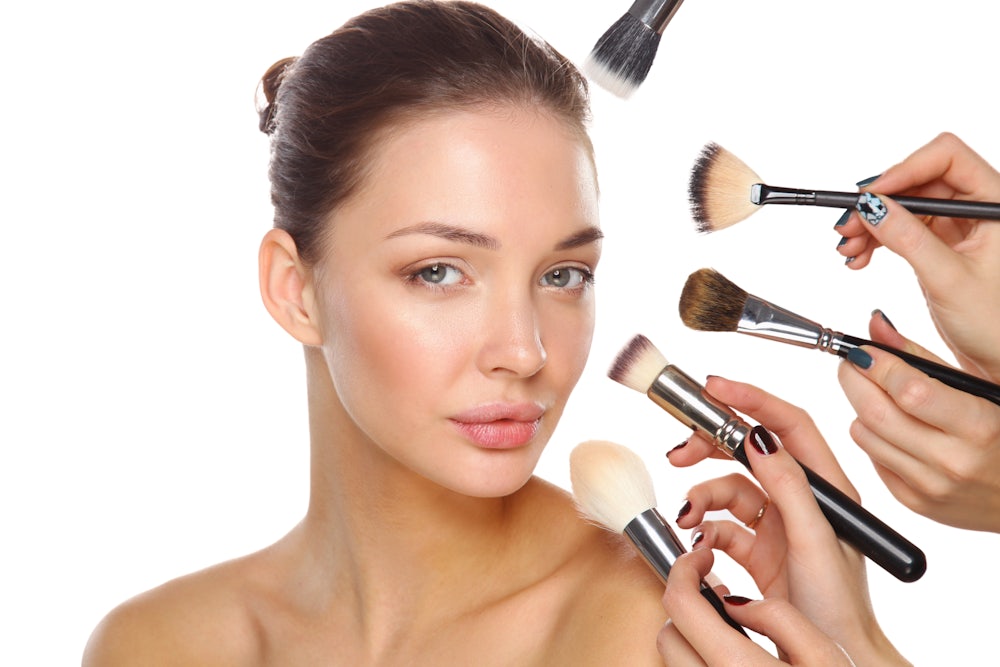If you’re a woman with any sort of prominence in any kind of chic profession, it’s only a matter of time until you’ll be asked to open up about your beauty routine. Which means it’s probably a good idea to have something along those lines, and no, makeup isn’t enough: A routine is something that involves, say, a cleanser, a toner, various masks, a season-specific array of creams, a gel, an ointment, and a pen. And e-commerce-friendly links at hand for each.
The shares-her-routine genre as we now know it was pioneered by Into The Gloss, with its “The Top Shelf” series, which features the very glamorous, along with a user-generated-content version of the same. But it’s now a lifestyle staple, found everywhere from Teen Vogue (“Lucy Hale Shares Her Entire Beauty Routine”) to Marie Claire (“How Caitlyn Jenner Switched Up Her Skincare Regimen Post-Transition”) to New York magazine (“Inside a Beauty Editor’s Insane Skin-Care Routine”) to the New York Times (“Emma Roberts Shares Her Beauty Routine”). The formula is about the same across the board: A woman we’ve heard of—or who seems kind of with-it—opens up about… having skin, I suppose. Rarely is more revealed.
But it’s compelling nonetheless. Someone, somewhere, thought it would be a good idea to present a 22-slide slideshow on “Martha’s Skin Regimen.” (Martha, as in Stewart.) From Slide 3: “Martha gets up at 5 a.m. to put on a facial mask for 30 minutes […]” The thing takes us minute by minute through her morning and night rituals, in such excruciating detail—from Slide 6: “Then she jumps into a hot shower for seven minutes. The steam removes the mask.”—that one is half-awaiting the moment when toilet paper will make an appearance. (And why shouldn’t it?)
Why, then, has the shares-her-routine genre caught on? Presumably, a cynic might say, because it sells skin-goop. One can infer by the proliferation of these stories that, as a business model, it works. Each of these posts or articles includes links to places where one might spend an exorbitant amount on a few ounces of product. And Into The Gloss is now overtly selling something—namely its own brand of skincare products—with an array of euphemisms, including one that promises to function as “a juice cleanse for your face”—which is, I think, meta-snake-oil.
Skin-goop gets sold, then, both in the straightforward sense and in a subtle one: Once the routine is established as a thing, the rest of us can feel relatively low-key if we only get the serum and the mask. There’s also a sisterhood effect—a woman without a routine is either gender-nonconforming (conventional femininity these days involving, it seems, a multistep face-dabbing process); neglecting personal upkeep (this is simply about self-care!); or—most damningly—a smug possessor of naturally perfect skin, flaunting it over everyone else. The possibility of simply having a line here, a pimple there, and not using multiple tiny $50 jars of skin creams to address these concerns is never really allowed for.
The skincare story isn’t about skincare. It’s a fantasy of money and time: The woman with an 18-step beauty routine isn’t working until 11pm and falling asleep in front of an episode of “Midsomer Murders.” She’s winding down after a day spent browsing artisanal housewares in the Flatiron district.
If you’re pondering the relative advantages of the French and Korean methods of makeup removal, you are, at the very least, removing your makeup. And you’ve probably brushed, flossed, and removed your earrings as well.
Except it isn’t time, exactly, that prevents the reader from living that life. One could make a version of the point Michael Pollan once did about cooking vs. cooking shows: if you have time to watch, you have time to do. In the time it takes to read 276 words on skincare by a Rockefeller, I’m sure a mere mortal could, at the very least, swipe off her eyeliner.
There may be a positive, though, in the shares-her-routine-ification of lifestyle writing. It’s replacing diet advice, which, while still around, has become fraught/passé. And skincare is beauty at its least problematic. Nothing triggers anyone, and there’s no outrage-bait any stronger than pointing out that hey, this woman sure seems to have a lot of money to spend on goop. Body-image concerns are evaded, and so too are racial and ethnic ones—unlike hair products or foundation, the sort of creamy or translucent gels that aren’t do anything anyway can, almost by definition, be used by all. (Nails had their moment, but proved controversial after all.) The only –ism the genre can be accused of—apart from classism—is probably ageism. But even there, there’s the underlying understanding (or at least I hope there is) that these products aren’t really doing anything in that department.
The shares-her-routine genre, then, has a certain lesser of evils allure. It’s still very much about telling women we come up short, and yes, a fine feminist case could be made for asking these prominent women about anything, anything, other than the minutiae of their primping. But unlike the diet industry, it doesn’t demand a full-time, potentially debilitating focus on achieving perfection. It’s a kind of tepid, hyper-capitalist liberation, not because the ability to achieve flawless skin through the application of expensive moisturizer is liberating (or even possible; there’s the mostly-unstated likelihood that the glamorous woman whose routine one is hearing about has conveniently skipped over the bit where cosmetic dermatology or surgery steps in), but because there’s no active harm involved.
